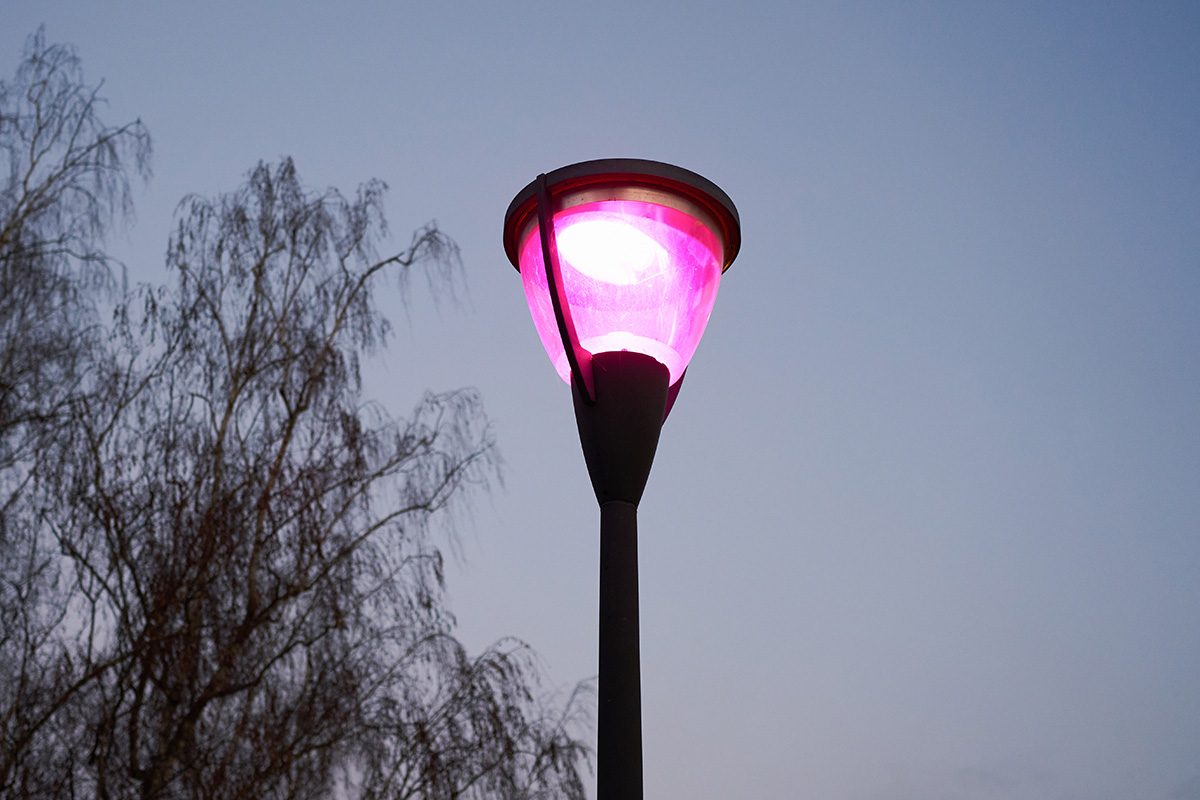If you've ever wondered why purple street lights exist, we have answers.

Why Are Some Street Lights Turning Purple? The Surprising Reason Explained

It’s possible that while driving through your hometown or a new city, you could drive past purple street lights. At first glance, you may have thought your eyes were deceiving you or it was a weird reflection, but as it kept happening, you may have started to wonder what they were since they weren’t your standard vibrant yellow or white LED streetlights.
Ahead, lighting experts weigh in about purple streetlights to explain what they are, why you’re seeing more of them these days, and how they may impact you on the road now and in the future.
What Do Purple Streetlights Mean?
Purple streetlights don’t mean anything except that the original product had a manufacturing flaw. According to Michele Lapicco, design consultant to Fine Art Handcrafted Lighting, streetlights turn purple usually due to a manufacturing issue.
“These lights were originally installed as standard white LED streetlights, but due to a failure in the phosphor coating that balances the color temperature, the lights have started to emit a purplish hue over time,” Lapicco says. “It has become more common as cities across the country upgraded to energy-efficient LEDs in recent years.”
Why Are Streetlights Turning Purple?

As mentioned above, the reason streetlights are turning purple is pretty simple — either there was a manufacturing defect, or the lights have run their course and need replacing.
“The purple hue is caused by degradation in the phosphor layer of certain LED streetlights, which is responsible for converting blue light into a balanced white light,” says Alisha Kessler, a lighting product manager at Enbrighten. “If the coating wears down prematurely, which has happened with some batches from various manufacturers, it reveals the cooler, purplish light underneath.”
The rise in purple street lights isn’t intentional, but it has been spotted across several states due to widespread supply chain use of the same affected models that were manufactured in mid-2017 and installed in 2018. According to USA TODAY, Acuity Brands Lighting is one of the companies that produced streetlights that had this issue, which came to the forefront in 2021 and 2022.
Many purple street lights in areas across the country have already started to be replaced, but it remains unclear whether or not that will continue.
How Does Turning Streetlights Purple Affect Vision?
Streetlights are designed to help keep drivers safe on the road, especially at night, but the purple hue coming from the faulty ones can actually negatively affect vision.
“Purple LED light can actually impact visibility, especially at night as it lacks the full-spectrum coverage of white light, which can distort color perception and depth,” says Lapicco. “This might reduce contrast making it harder for drivers or pedestrians to judge distances or recognize hazards, especially in areas that already lack sufficient lighting or reflective signage.”
At the end of the day, Kessler reiterates the point that quality matters especially when decisions impact public safety and urban aesthetics. “While the purple glow can look oddly beautiful, safety and clarity must always come first,” she says.
Sources
-
USA TODAY: Have you seen a purple streetlamp? A puzzling coast-to-coast phenomenon explained.
About the Experts
-
Michele Lapicco, design consultant to Fine Art Handcrafted Lighting
-
Alisha Kessler, a lighting product manager at Enbrighten
Related



















